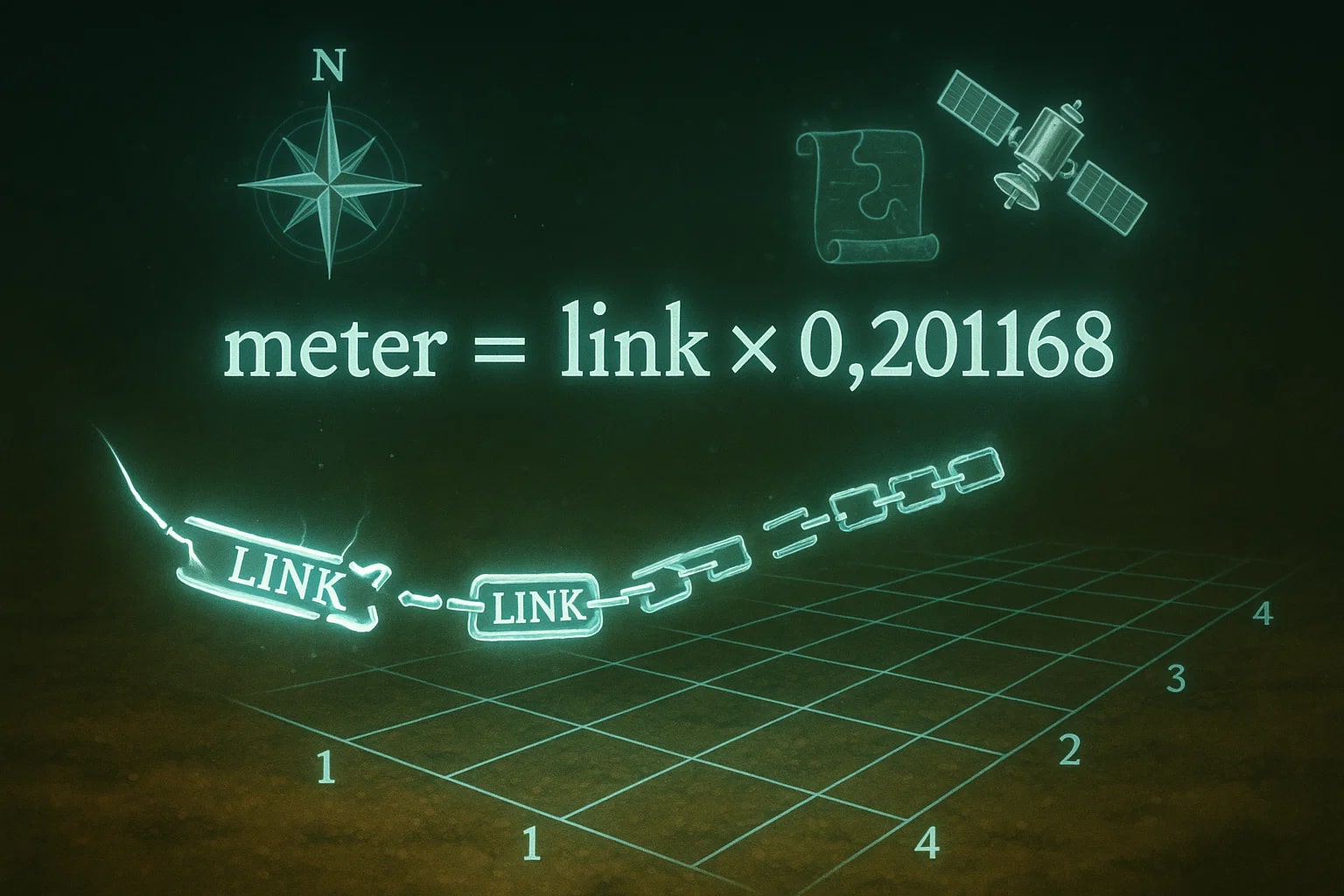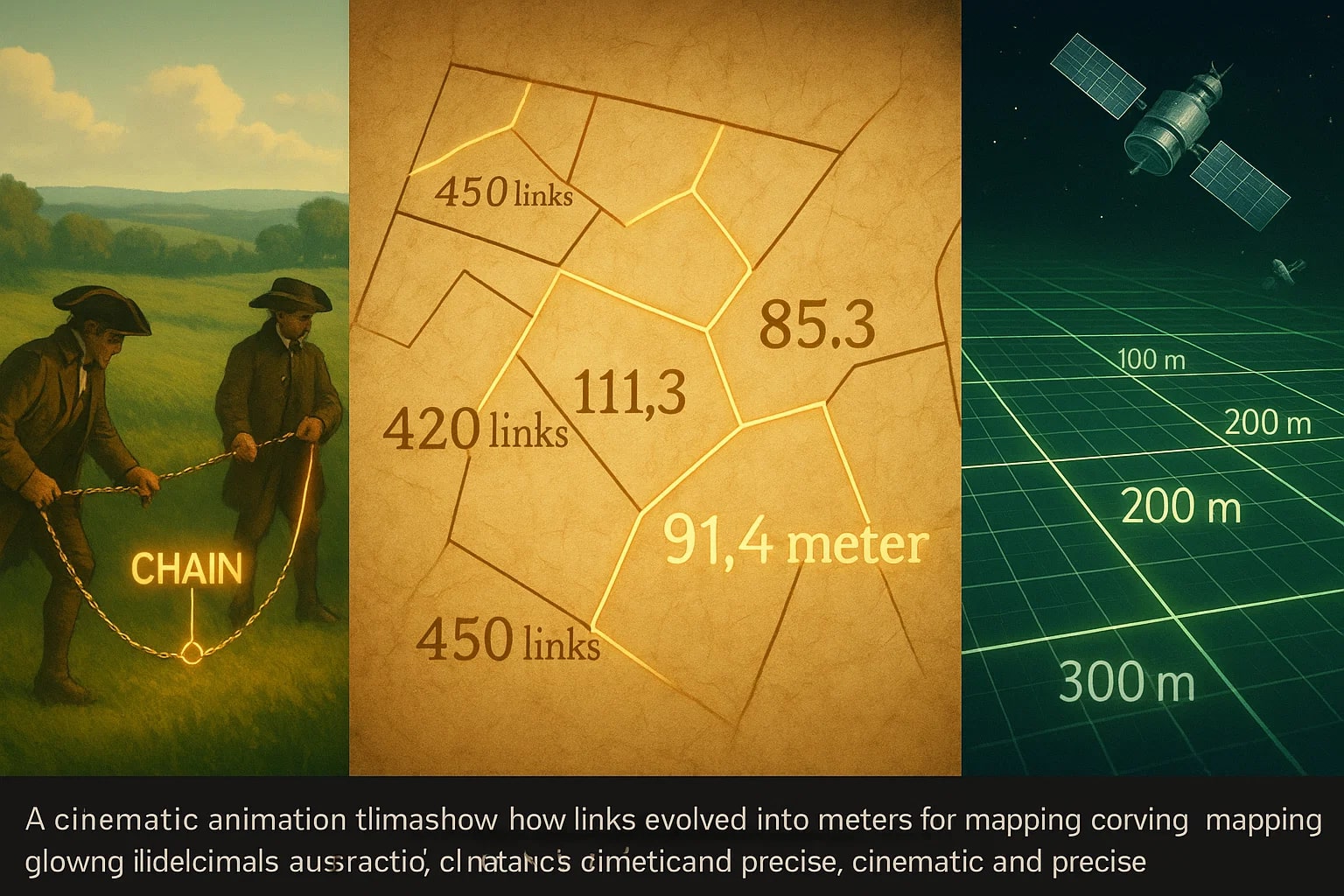link to meter – How to convert li to m
Converting from link to meter brings together a historic surveying unit and the modern international standard. Links were part of Gunter’s chain system, once essential for land measurement, while meters are the SI base unit used worldwide today. Learning how to convert li to m helps interpret old maps, deeds, and surveys with modern precision.

What is a Link (li)?
A link equals 0.66 feet or 7.92 inches. In metric terms, it is exactly 0.201168 meters. There are 100 links in one chain and 80 chains in a mile. The unit was introduced by Edmund Gunter in 1620 for consistent surveying.
What is a Meter (m)?
The meter is the SI base unit of length. Defined by the speed of light, it is used globally in science, trade, construction, and navigation as the universal measure of length.
How to Convert li to m
The formula is:
meter = link × 0.201168
For example, let’s convert 40 li into meters:
meter = 40 × 0.201168 = 8.04672 m
So, 40 links ≈ 8.05 meters.
For more conversions, check the Length Converter or explore more measurement tools in the Conversion Tools.
Do you know?
-
The link was a key unit in Gunter’s chain, invented in 1620 to simplify surveying with a 66-foot chain of 100 links.
-
Early American land surveys, including those in the Public Land Survey System, recorded distances in links and chains.
-
One acre was historically defined as 10 square chains, or 10,000 square links.
-
The meter was first defined in 1793 during the French Revolution as one ten-millionth of the distance from the equator to the North Pole.
From Colonial Surveys to Modern Maps
The link played a central role in dividing and selling land in colonial America and beyond. Surveyors stretched chains divided into links to mark boundaries, ensuring consistent land parcels. Many deeds and maps from the 18th and 19th centuries use links extensively.
Today, when historians or surveyors digitize old records, converting links into meters ensures compatibility with modern mapping systems. For example, a property boundary of 500 links equals 100.584 meters—easy to integrate with GPS and GIS systems.

Bridging Tradition and Precision
The conversion from link to meter highlights the journey from practical, tool-based surveying to the precision of modern science. While links now belong mostly to history, their influence remains in land records and maps.
By using this simple formula, you can bring historical surveying data into modern measurement systems with clarity and accuracy.

